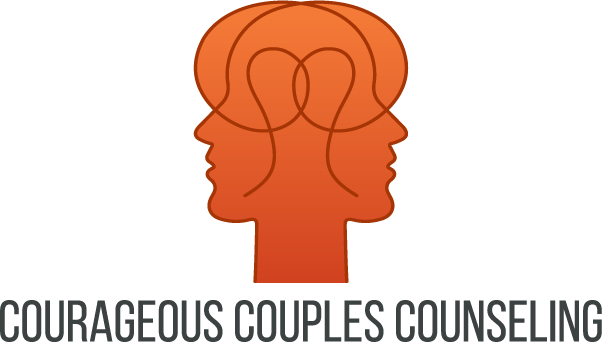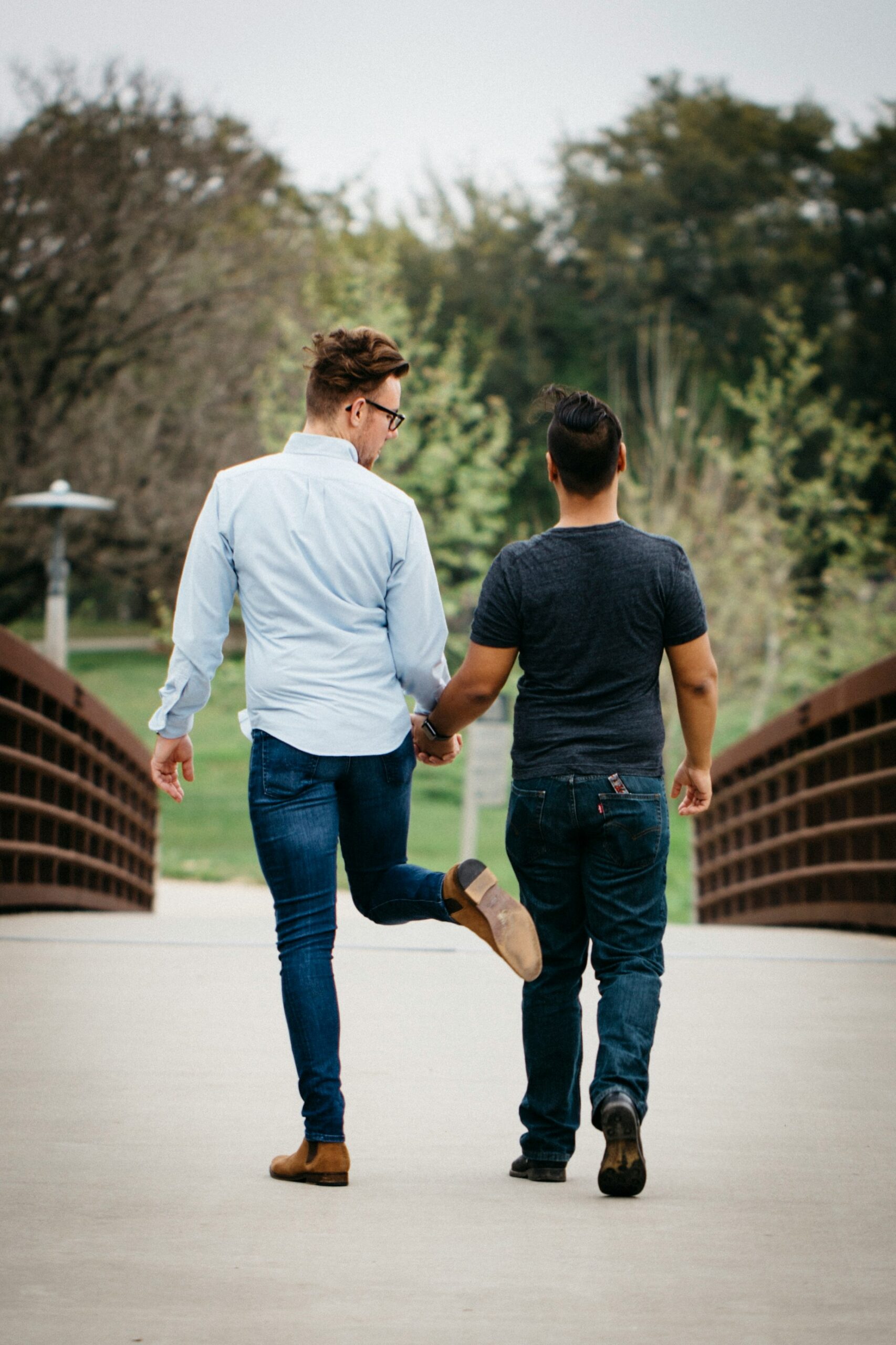Every relationship encounters stress, but LGBTQ+ couples often face unique challenges, including societal pressures, discrimination, and the impact of marginalization. Building emotional resilience within your relationship is not only possible but essential for thriving together. By fostering healthy coping mechanisms and drawing from the work of experts like Emily Nagoski (Burnout: The Secret to Unlocking the Stress Cycle) and Marc Brackett (Permission to Feel), you and your partner can strengthen your bond and face challenges as a united team.
1. Recognize and Address the Stress Cycle
Emily Nagoski’s research highlights the importance of completing the stress cycle—a process that helps our bodies move out of a stress response. Stress is inevitable, but unresolved stress can accumulate and harm both individuals and relationships. Together, you and your partner can address stress in healthy ways by:
- Physical activity: Engage in activities like walking, dancing, or yoga together to release tension.
- Affection: Physical touch, such as holding hands or hugging for 20 seconds, can help signal safety and calmness to your bodies.
- Laughter: Sharing humor and lighthearted moments can dispel stress and bring you closer.
The goal isn’t to eliminate stress entirely but to ensure it doesn’t linger in ways that strain your relationship.
2. Cultivate Emotional Awareness as a Team
Marc Brackett’s RULER framework for emotional intelligence encourages individuals to Recognize, Understand, Label, Express, and Regulate emotions. In the context of a relationship, emotional awareness can be a shared practice. Here’s how:
- Recognize and validate each other’s feelings: Instead of dismissing emotions, acknowledge them. For example, say, “I can see that this situation has been really stressful for you. Do you want to talk about it?”
- Label emotions together: Help each other identify what you’re feeling. Is it anxiety, frustration, or sadness? Being specific fosters clarity and connection.
- Co-regulate: Support each other in finding balance. This might mean taking turns calming one another during tough moments or simply being present without trying to fix things.
When both partners engage in emotional intelligence practices, they create an environment of mutual respect and understanding.
3. Strengthen Your Connection Through Shared Rituals
Rituals can act as anchors in times of uncertainty, providing a sense of stability and predictability. LGBTQ+ couples, in particular, can benefit from creating intentional rituals that honor their unique bond. Consider:
- Weekly check-ins: Set aside time to discuss highs, lows, and any unspoken concerns.
- Celebrating milestones: Recognize achievements—big or small—as a way of affirming your shared journey.
- Daily affirmations: Start or end your day by expressing appreciation for one another. Even a simple “I’m glad we’re in this together” can make a difference.
Rituals not only reinforce your connection but also act as buffers against external pressures.
4. Develop Healthy Boundaries With External Stressors
Many LGBTQ+ couples face societal stressors that can seep into their relationship. Building resilience means learning to protect your connection from outside negativity. Some strategies include:
- Limit exposure to negativity: Be mindful of how much time you spend engaging with upsetting news or unaccepting individuals. Protect your mental space.
- Lean on affirming communities: Surround yourselves with friends, allies, or support groups who celebrate and uplift you.
- Set joint boundaries: For example, decide together how to navigate family gatherings or conversations about LGBTQ+ issues to minimize conflict and stress.
By drawing boundaries, you create a safe haven where your relationship can thrive.
**5. Embrace Self-Care and “We-Care”
In Burnout, Nagoski emphasizes the importance of self-care. For couples, this extends to “we-care”—the practice of caring for the relationship as its own entity. Balancing individual needs with the relationship’s needs is key. Some ideas include:
- Self-care: Encourage each other to engage in solo activities that recharge you, like journaling, reading, or solo workouts.
- We-care: Dedicate time to activities that nurture your connection, such as date nights, couple’s massages, or simply cooking together.
The interplay between self-care and we-care ensures that both you and your relationship remain resilient and energized.
6. Reframe Challenges as Opportunities for Growth
Facing adversity can feel overwhelming, but it also provides an opportunity to grow stronger together. When conflicts arise or external stress impacts your relationship, approach these challenges with curiosity:
- **What can we learn from this?”
- **How can we support each other better moving forward?”
- What strengths have we discovered in ourselves or our partnership?
Resilience is built by navigating hardship with grace and a willingness to grow, both individually and as a couple.
7. Know When to Seek Support
Resilience doesn’t mean doing it all alone. Sometimes, seeking help from a therapist who understands the unique experiences of LGBTQ+ couples can make a world of difference. Therapy can:
- Provide tools for navigating external pressures.
- Facilitate deeper emotional connection.
- Help resolve recurring conflicts or misunderstandings.
Seeking support isn’t a sign of weakness—it’s a step toward building the strongest foundation possible for your relationship.
Create Resilience, Together
Building emotional resilience isn’t about avoiding stress or hardship but learning to face it hand-in-hand. By completing the stress cycle, fostering emotional intelligence, and creating shared rituals, you can strengthen your connection and weather any storm. Remember, resilience is a practice, not a destination, and every step you take together builds a brighter, stronger future.
If you and your partner are ready to explore tools for deeper connection and resilience, Courageous Couples Counseling is here for you. Schedule a free consultation today, and let’s build a foundation that supports and celebrates your love.

